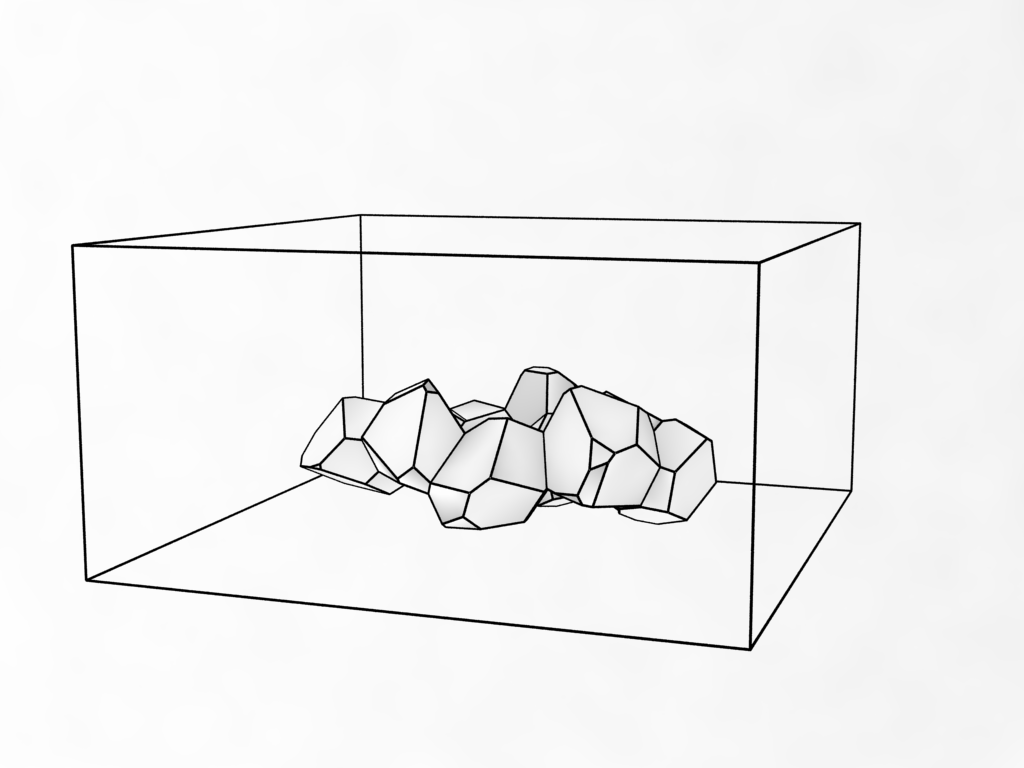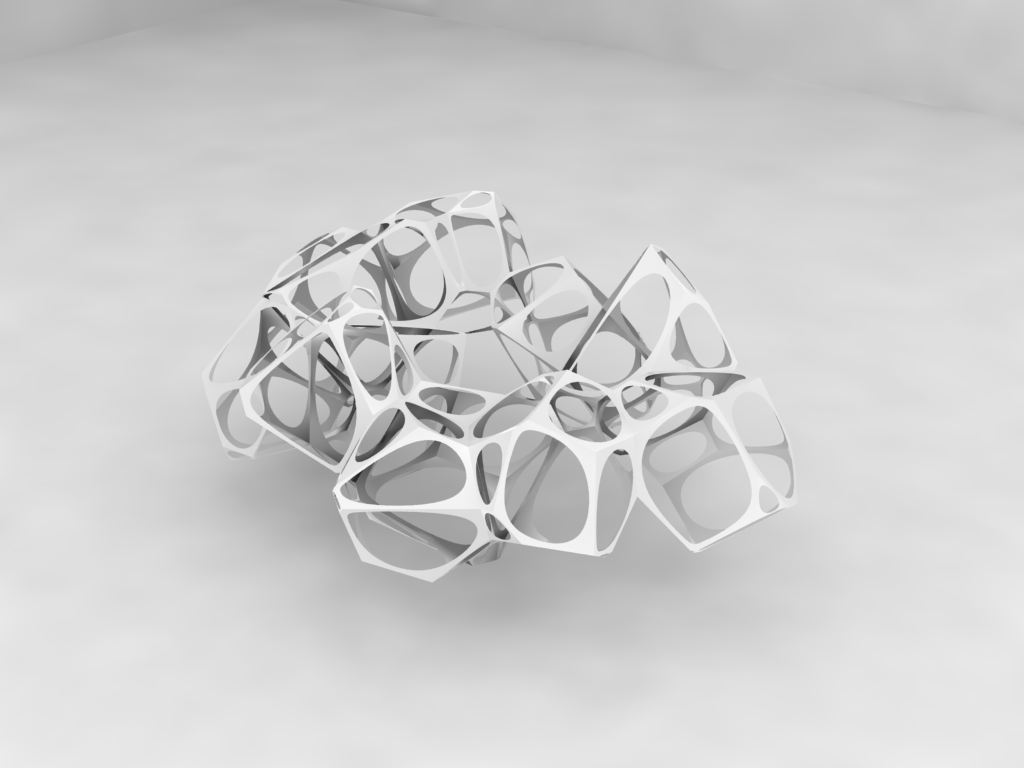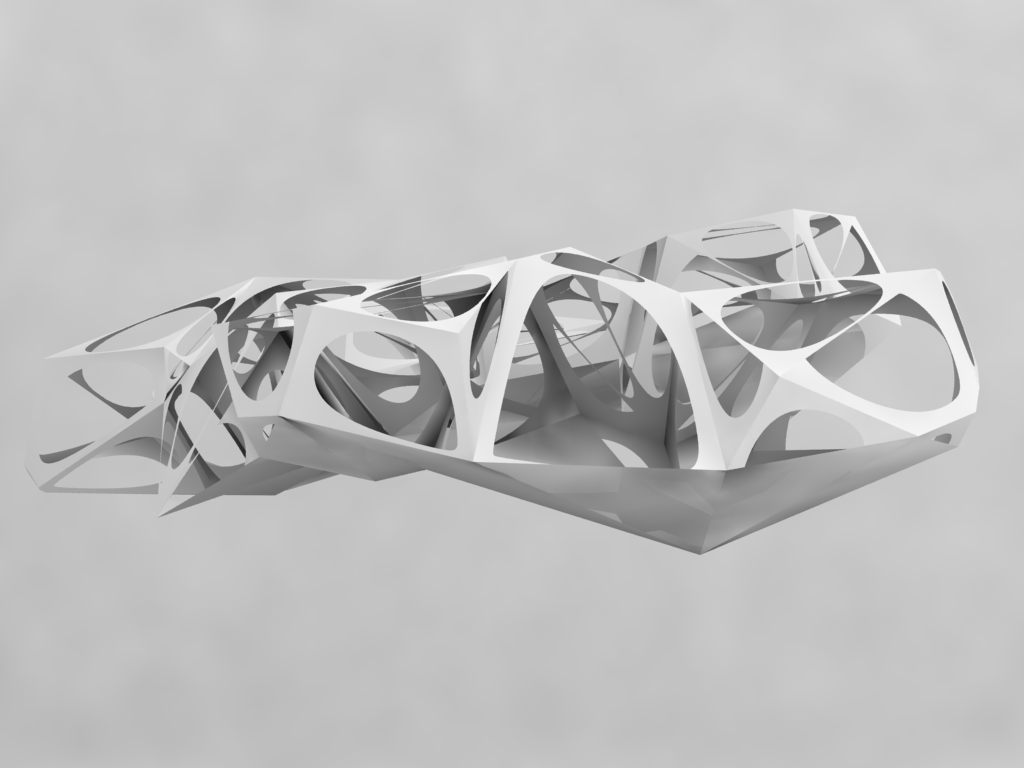Sponge
date: 2012, 1st semester
course: (Architecture major) Architectural Design Studio 1-1
interval: half-semester (mid term)
Sketch¶
Diagram¶
There are several ways to explain Voronoi diagrams, but the following explanation is quite intuitive in that it captures the principle that the structure of a sponge is formed by multiple cells simultaneously growing and occupying space.
Start by scattering several points on a plane, and draw circles centered at each point with continuously increasing radii. At the moment when a growing circle meets another circle, stop the growth at that point of intersection.



The figures above briefly illustrates the process.

\(V_k\) is defined by Voronoi space based on points \(P_k\) within \(n\) dimensional Euclid space. This logic expressed in the language of mathematics states that a Voronoi space is a set of points that are closer to a particular reference point than to any other reference points. The figure describes the Voronoi space inside cubic frame, where \(n=3\) and \(m=20\).

From a geometric perspective, when constructing a Voronoi foam for arbitrarily given points in three-dimensional space, each cell is composed of an average of 14 faces, and each face is composed of an average of 5 edges.





















